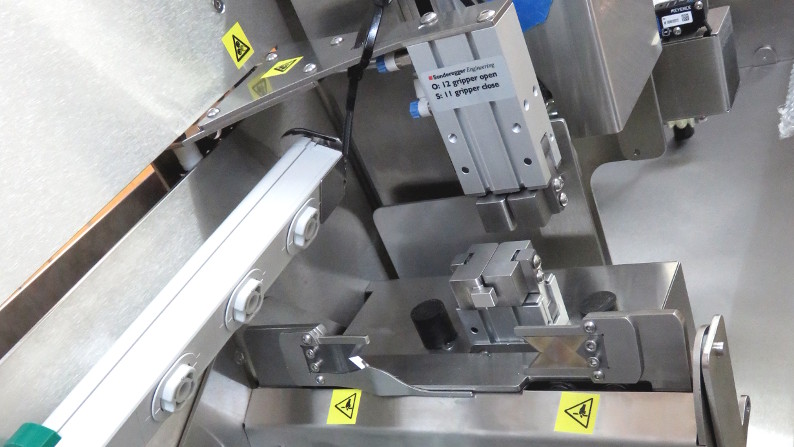Standard features of all machines
General Concept
The heat tipping machine pulls the suture thread to a specified length and then heats the tipping area of the suture. Cooling down after heat treatment stiffens the end.The machine cuts in the middle of the stiffened portion, creating two heat-tipped ends. This machine is specially developed for multifilament sutures, i.e braided sutures. With a a supplemental device, it can also treat monofilaments. The best of all: No glue is used for stiffening.
Cristal-Clear Cut
Through the 4 edges of the cutting blade (), the suture end stays round and does neither flatten nor crunch during cutting. Furthermore, the hardened filament stays in place, such that it can afterwards perfectly be inserted into the needle hole without fraying.

The super-sharp knifes () are made out of carbide-metal, which is much harder than hardend steel. This guarantees a clean cut and an extreme long life expectancy. We guarantee 1 million cuts of stiffened PGA suture per blade set.
Cut with an angle
Angled cutting facilitates inserting () the suture into a drilled needle. Through the sharp point caused by angled cutting, putting the suture into the hole is much easier.
Infrared heat stiffening
The surface fibers are heated up through the homogeneous infra-red heat source as shown with arrows around the suture in . For compliance reasons, the heat source is not touching the product. Certain suture-types like Ultra-High-Density-Polyester (UHDPE) can be shrunk in diameter up to about 10%.
materials to be heat stiffenable
- PET
- Poly-ethylene (Ashaway)
- PE
- braided polyester (Pearsalls Limited)
- PLA
- poly-lactide acid
- PGA
- poly-glycolic-acid (Mitsui, Samyang, Gunze)
- PP
- poly-propylene
- UHDPE
- Ultra High Density Polyethelene
- PA
- Nylon
shows the polymer-materials which were tested and valideted by our existing customers. Materials of natural origin need to be tested by the cutomer (like silk, linen, etc). If they are treated with silicon, limited stiffening might be possible.
We build also machines to treat teflon suture (PTFE). However this is a specialized machine, a standard machine cannot treat teflon.
- ≥USP 3
- 4 sutures/minute, 240 sutures/hour
- USP 2..3-0
- 8 sutures/minute, 480 sutures/hour
- USP 4-0 ..6-0
- 6 units/minute 360 sutures/hour
- ≤USP 7-0
- only with the micro-sutures option (see options)
For thin sutures is the micro-suture option necessary. The necesity of this module arrises at about USP 7-0 as can be see in . Thick sutures reduce the speed of the machine through the huge volume which needs to be heated. The heat needs to penetrate through the surface into the core of the suture. This takes more time for thicker sutures.
Flat tape heat stiffening
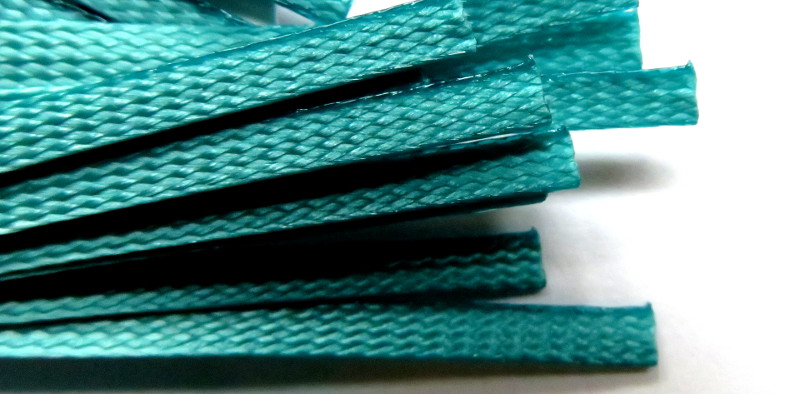
NEW!: The standard machine can treat flat tapes without any modification of the machine. Just load the software parameter set and start stiffening and cutting. shows green PET-tape.
Traceability (7640345542068)
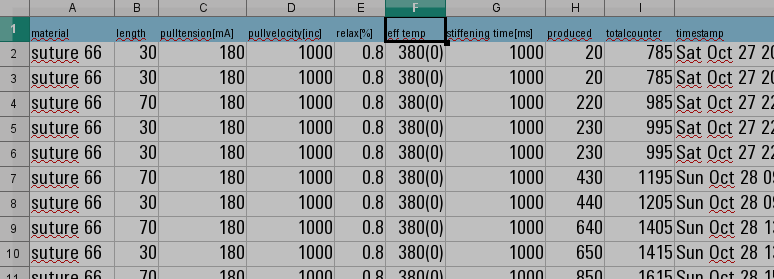
Each time when the operator opens the door, the whole production parameter-set is automatically written into an Excel-readable file, . The data is on an USB-memory-stick and can be processed on a standard computer or fed into the SAP-System. This automatic logging fullfils the traceability-requirements of the medical device quality management standard ISO 13485.
Suture collection tray
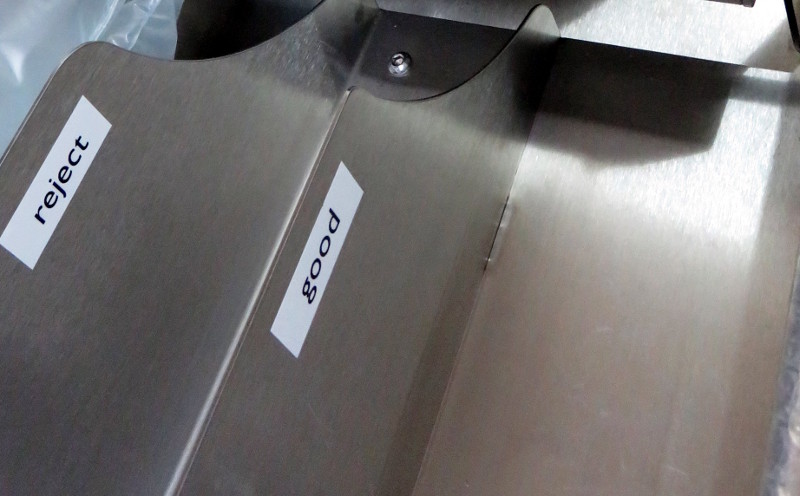
Each machine is equipped with two disitinctive trays. One for the good sutures () as well as the rejected sutures (if there are knots in the suture or the first cut). Each suture is put in the correct tray according to the automated software quality control.
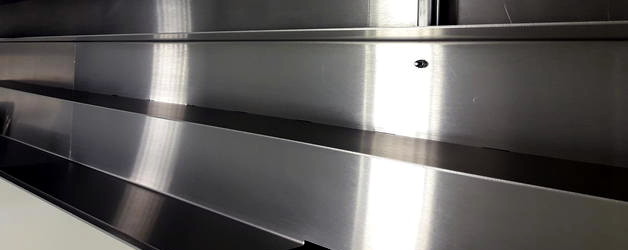
Depending on the requirements of the client the machine is delived with the best suited suture cellection system. The high volume tray is good for suture with little memory effect, such as UHDWPE, (). It also is perfect if the sutures are rather thick. (USP 0 and bigger).

For mid sized sutures (approx. USP3-0) we propose the mid-sized suture tray. It collects nicely also thinner sutures and they can be taken out as a bundle. Maximum amount per batch approx. 250 sutures of USP3-0.
The machine is delivered with one of these two trays. Retrofitting with another tray is always possible and can be exectuted by a machine-operator (no technician needed).
Various bobine (spool) sizes
Using spacers the unrolling unit can be adapted for a wide range of small and large spools. Extremely quick setup of suture within 25 seconds.
Power supply
Each machine is built specifically for the country where it will be operated. Either 100...120V AC or 200 ... 240V AC. We strive to deliver you a machine which is plug-and-produce. For this reason, we deliver and test the machine with the correct plug.
